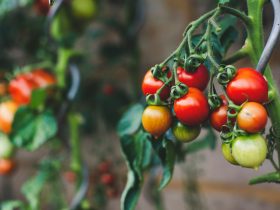Micro-gardening is an innovative and sustainable approach to growing plants in small spaces.
Whether you live in an apartment, have a tiny balcony, or just want to maximise your available outdoor area, micro-gardening allows you to cultivate fresh produce, herbs, and flowers efficiently.
This guide will explore the benefits of micro-gardening, practical methods, and essential tips to get started.
The Benefits of Micro-Gardening
Micro-gardening is gaining popularity due to its many advantages, including:
- Space Efficiency – Even the smallest spaces, such as windowsills, balconies, and rooftops, can be transformed into productive gardens.
- Sustainability – Growing your own herbs and vegetables reduces food miles and waste, contributing to a more eco-friendly lifestyle.
- Health Benefits – Fresh, homegrown produce is healthier, free from harmful pesticides, and packed with nutrients.
- Cost Savings – Cultivating your own herbs and vegetables can reduce grocery bills, making micro-gardening a budget-friendly hobby.
- Stress Relief – Gardening is a therapeutic activity that promotes relaxation and mental well-being.
Choosing the Right Plants
The key to successful micro-gardening is selecting plants that thrive in small spaces. Consider the following options:
- Herbs: Basil, mint, thyme, coriander, and parsley are perfect for compact gardens and require minimal care.
- Leafy Greens: Lettuce, spinach, and kale grow well in containers and can be harvested regularly.
- Compact Vegetables: Cherry tomatoes, peppers, radishes, and spring onions adapt well to small spaces.
- Microgreens: Fast-growing and nutrient-dense, microgreens like mustard, cress, and pea shoots can be grown indoors year-round.
- Dwarf Varieties: Many vegetables and fruits, such as dwarf beans, strawberries, and miniature carrots, have been developed specifically for small-scale gardening.
Best Micro-Gardening Methods
There are several techniques to maximise space and yield in a micro-garden:
1. Container Gardening
Using pots, window boxes, and hanging baskets allows for flexible planting arrangements. Ensure containers have proper drainage and use high-quality soil to support plant growth.
2. Vertical Gardening
Vertical gardens utilise walls, trellises, and shelving to grow plants upward rather than outward. Hanging planters, stackable pots, and wall-mounted garden systems are excellent for optimising limited space.
3. Hydroponic and Aquaponic Systems
For those looking to experiment with soilless gardening, hydroponics and aquaponics offer innovative ways to grow plants using nutrient-rich water. These systems are highly efficient and require minimal space.
4. Raised Beds and Pallet Gardens
Raised beds and repurposed wooden pallets are great for organising plants while improving drainage and soil quality. These setups are ideal for balconies or patios.
5. Window Farming
A window farm involves growing plants in recycled bottles or small containers placed along a sunny windowsill. This technique is especially useful for growing herbs and leafy greens indoors.
Essential Micro-Gardening Tips
To ensure a successful micro-garden, follow these essential tips:
- Choose the Right Soil – Use high-quality potting soil with good drainage and nutrient content to support plant growth.
- Maximise Sunlight – Most edible plants require at least 6 hours of sunlight per day, so position your garden accordingly.
- Use Smart Watering Techniques – Small gardens can dry out quickly, so water consistently but avoid overwatering. Consider self-watering planters for added convenience.
- Fertilise Regularly – Nutrient-rich soil is crucial for container plants. Use organic compost or liquid fertilisers to maintain plant health.
- Practice Succession Planting – Replant crops every few weeks to ensure a continuous harvest throughout the year.
Micro-gardening proves that you don’t need a large outdoor space to enjoy the benefits of growing your own food.
By selecting the right plants, utilising space-saving techniques, and following essential gardening practices, you can create a thriving, sustainable garden in even the smallest of spaces.
Whether you’re a beginner or an experienced gardener, micro-gardening offers a rewarding way to connect with nature and enjoy fresh, homegrown produce year-round.











Leave a Reply